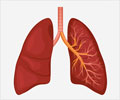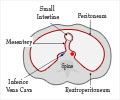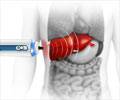A wristband-type wearable sweat sensing band can help in the quick analysis of sweat and easy diagnosis of conditions like cystic fibrosis.
Highlights
- The conventional method of diagnosis of cystic fibrosis, a genetic condition, has always been prolonged and cumbersome.
- The new wristband-type wearable sweat sensor stimulates the skin to produce minute amounts of sweat, quickly evaluates the contents and transmits the data via a cellphone to a server to analyze the results.
- This device can also be used to measure other constituents in the sweat like glucose, that corresponds to the blood glucose levels, which can help in detecting conditions like diabetes.
- collect sweat
- measure the molecular constituents of the sweat
- electronically transmits the results for analysis and diagnostics
Milla shares senior authorship with Ronald Davis, PhD, professor of biochemistry and of genetics at Stanford. Former Stanford postdoctoral scholar Sam Emaminejad, PhD, and UC-Berkeley postdoctoral scholar Wei Gao, PhD,
Mechanism
Cystic fibrosis (CF) is a genetic condition which affects the mucus and sweat glands. This causes the thick mucus to build up in the lungs, pancreas and other organs. The thickened mucus becomes a favorable environment for disease causing pathogens to hold on and breed, rendering the patients incapable of breathing. This condition eventually leads to respiratory failure and shortened life-span.
Conventional methods for diagnosing cystic fibrosis required patients to visit a specialized center and sit still while electrodes stimulate sweat glands in their skin to provide sweat for the test.
The process of sweat collection can stretch for approximately 30 minutes during which the children are required to sit still. After this stage is the prolonged wait for the results while the lab measures the chloride ions in the sweat, which is an indicator of cystic fibrosis. This practice has been on for the past 70 years.
The device has two-parts, including the flexible sensors and microprocessors, which sticks to the skin, stimulates the sweat glands and then detects the presence of different molecules and ions based on their electrical signals. The device is robust and can be run with a smartphone, which sends measurements to a cloud and receives a result immediately after review at a specialized center.
More levels of chloride in the sweat, generates more electrical voltage at the sensor's surface.
Additional Use
This sensor could also be used for drug development and drug personalization.
"CF drugs work on only a fraction of patients," said Sam Emaminejad, who is now an assistant professor of electrical engineering at UCLA. "Just imagine if you use the wearable sweat sensor with people in clinical drug investigations; we could get a much better insight into how their chloride ions go up and down in response to a drug."
The wearable sweat sensor can also be used to measure glucose levels in sweat, that correspond to blood glucose levels. This makes the device useful in detecting and monitoring pre-diabetes and diabetes.
The device can also be used to measure other molecular constituents of sweat like sodium and potassium ions and lactate.
"Sweat is hugely amenable to wearable applications and a rich source of information," Ronald Davis, PhD, professor of biochemistry and of genetics at Stanford said.
This portable, self-contained sweat sensor can be useful for people living in underserved communities or in villages in developing countries, where conventional testing is unavailable.
"You can get a reading anywhere in the world," Milla said.
"In the longer term, we want to integrate it into a smartwatch format for broad population monitoring," Emaminejad said.
The device helps in frequent monitoring of the response and compliance of patients to treatment.
Milla said "It's a little like the old days when people with diabetes had to come into a clinic to get their glucose monitored. The real revolution came when people started to do their own finger stick, and nowadays you can even do it with continuous monitors."
"When we were testing the device, we noticed that people had different sweat profiles. That showed we needed to calibrate accordingly," said Emaminejad. Once researchers have determined a personalized baseline through long-term monitoring, they can begin to spot changes in health status, he said.
Major Challenges
Two major challenges with a wearable sweat sensor are:
- Reproducibility- that indicates the consistency of measures in the same person from day to day or hour to hour
- Mapping the molecular constituents of sweat- There is a limitation with the constituents that can be measured in the sweat
Reference
- Carlos Milla et al. Autonomous sweat extraction and analysis applied to cystic fibrosis and glucose monitoring using a fully integrated wearable platform. Proceedings of the National Academy of Sciences; (2012) doi:10.1073/pnas.1701740114
Source-Medindia














